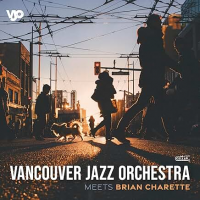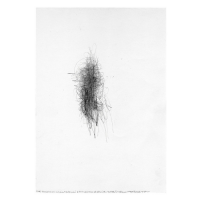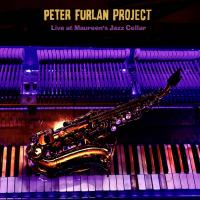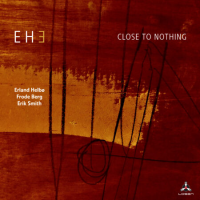Home » Jazz Articles » Multiple Reviews » The Rudy Van Gelder Blue Note Editions
The Rudy Van Gelder Blue Note Editions
Van Gelder supposedly was talked into taking another listen to this music and remastering it using 24-bit technology as part of the label's 60th anniversary celebration.
This is, of course, not such a bad thing. Newbies need to know that there is music of this quality available. And they need to know that jazz didn't start with Wynton Marsalis—or Kenny G. They can discover some of the roots of the mostly hard-bop scene that these albums define.
But it seems that Blue Note also is trying to coax earlier buyers of these great albums into adding these CDs to their collections because they will hear something new in the way Van Gelder has remastered them. Those subtle nuances will probably be lost on most listeners. The brilliance of the music is the important thing—and that really hasn't changed.
Van Gelder supposedly was talked into taking another listen to this music and remastering it using 24-bit technology as part of the label's 60th anniversary celebration. One of the benefits is that Van Gelder was for the first time able to focus on the music more than on the technical aspects of recording during the sessions. He reportedly said on occasion, "You know, this album is really great." Enough said on that.
The second batch of six titles in the series focuses on three marvelous tenor sax voices, a Jazz Messengers date and a couple of more forward-looking items.
 Dexter Gordon's Go! is clearly one of the best of the first-rate recordings the tenorist made for Blue Note —solid and relaxed interpretations of five standards and one Gordon original with his usual charm and wonderfully witty interpolations.
Dexter Gordon's Go! is clearly one of the best of the first-rate recordings the tenorist made for Blue Note —solid and relaxed interpretations of five standards and one Gordon original with his usual charm and wonderfully witty interpolations.Recorded Aug. 27, 1962, with pianist Sonny Clark, bassist Butch Warren and drummer Billy Higgins, this Gordon album was one of the leader's favorites. The album has it all—steaming, straight-ahead blowing and tender ballad reworkings that get to the heart of Dexter's deep and enduring sentiment tempered by the full knowledge of the lyrics and their implications.
Certainly on the same high quality level is Soul Station, one of the superior efforts among the many grand works recorded by still-underrecognized tenorist Hank Mobley. On this Feb. 7, 1960, recording are a pair of book-end standards with four Mobley originals in the middle.
Like the Gordon CD, the music is a mixture of creative blowing numbers and ballad outings that offer nice changes of pace. As if Mobley's playing isn't enough, he gets support from pianist Wynton Kelly, bassist Paul Chambers and drummer Art Blakey—very strong and stimulating company. Mobley defines the directness and economy of the blues throughout this session.
 Speak No Evil, a Dec. 24, 1964, session, looks not only at the hard-edged but always on-the-mark tenor playing of Wayne Shorter but also at six of his ingenious compositions and includes an unissued alternate take of "Dance Cadaverous." Many of the tunes on this album have become jazz standard fare, by the way.
Speak No Evil, a Dec. 24, 1964, session, looks not only at the hard-edged but always on-the-mark tenor playing of Wayne Shorter but also at six of his ingenious compositions and includes an unissued alternate take of "Dance Cadaverous." Many of the tunes on this album have become jazz standard fare, by the way.With Shorter are trumpeter Freddie Hubbard, pianist Herbie Hancock, bassist Ron Carter and drummer Elvin Jones, so it's basically the Miles Davis group with Hubbard taking the brass role and Jones subbing for Tony Williams. Shorter's organic solo conception involves an ongoing restatement of the thematic material in myriad forms—sort of like the view through a kaleidoscope. Hubbard, Hancock and the rest also are noteworthy.
 Drummer Art Blakey and the Oct. 30, 1958, version of his Jazz Messengers are captured on Moanin', an album that not only features pianist Bobby Timmons' hit title track and an alternate take of that tune but includes tenor saxophonist Benny Golson's jazz standard tunes "Blues March" and "Along Came Betty."
Drummer Art Blakey and the Oct. 30, 1958, version of his Jazz Messengers are captured on Moanin', an album that not only features pianist Bobby Timmons' hit title track and an alternate take of that tune but includes tenor saxophonist Benny Golson's jazz standard tunes "Blues March" and "Along Came Betty."Golson's distinctively flinty tenor work and Timmons' funky piano underpinnings are consistently fine and there's the bright and bristling trumpet of Lee Morgan, the always supportive bass of Jymie Merritt and constantly busy drums of leader Blakey, a man who knew how to lift and push a band. Even though the instrumentation is the same as the Shorter album, the results are surely dissimilar but no less telling.
Pianist Herbie Hancock, trumpeter Hubbard, bassist Carter and drummer Tony Williams (the Miles Davis rhythm section with a most able horn substitute) are on board for Hancock's Empyrean Isles, a June 17, 1964, effort that includes the widely known "Cantaloupe Island," as well as alternate takes of "One Finger Snap" and "Oliloqui Valley."
This is thoughtful and thought-provoking music. Although its basic undercurrent is funky, there's an adventurous quality that's not easily defined. The bare-bones quartet offering obviously has Hancock and Hubbard in the solo spotlight but Williams keeps the proceedings wide open, while Carter keeps them grounded.
 When one considers all of Eric Dolphy's recorded output, the album that truly captures the essence of his music and puts it in its best light is Out to Lunch, a Feb. 25, 1964, date with trumpeter Hubbard, vibraphonist Bobby Hutcherson, bassist Richard Davis and drummer Williams.
When one considers all of Eric Dolphy's recorded output, the album that truly captures the essence of his music and puts it in its best light is Out to Lunch, a Feb. 25, 1964, date with trumpeter Hubbard, vibraphonist Bobby Hutcherson, bassist Richard Davis and drummer Williams.Dolphy, who died in Europe later that year, plays alto sax, bass clarinet and flute on this session that is always rewarding from a musical standpoint. The uninitiated listener, however, may have trouble getting next to the leader's wide interval swoops, jagged and fragmented improvising directions and passionate use of the coloristic and textural areas of his instruments. It's not easy music.
The odd man out in this column is alto and soprano saxophonist-flutist Julius Hemphill's self-produced Blue Boye, a long-out-of-print Mbari double-LP release recorded in January 1977. Hemphill, who achieved his greatest fame as part of the World Saxophone Quartet, died April 2, 1995.
This two-CD reissue from alto saxophonist Tim Berne's Screwgun label—Berne was an assistant producer of the original release, by the way—holds Hemphill's vivid investigations of blues roots in solo and overdubbed duo and trio formats. Not for the fainthearted listener, it is music from the avant-garde cutting edge and certainly speaks more strongly than most of the similar projects before and since.
Tags
PREVIOUS / NEXT
Support All About Jazz
 All About Jazz has been a pillar of jazz since 1995, championing it as an art form and, more importantly, supporting the musicians who make it. Our enduring commitment has made "AAJ" one of the most culturally important websites of its kind, read by hundreds of thousands of fans, musicians and industry figures every month.
All About Jazz has been a pillar of jazz since 1995, championing it as an art form and, more importantly, supporting the musicians who make it. Our enduring commitment has made "AAJ" one of the most culturally important websites of its kind, read by hundreds of thousands of fans, musicians and industry figures every month.



















